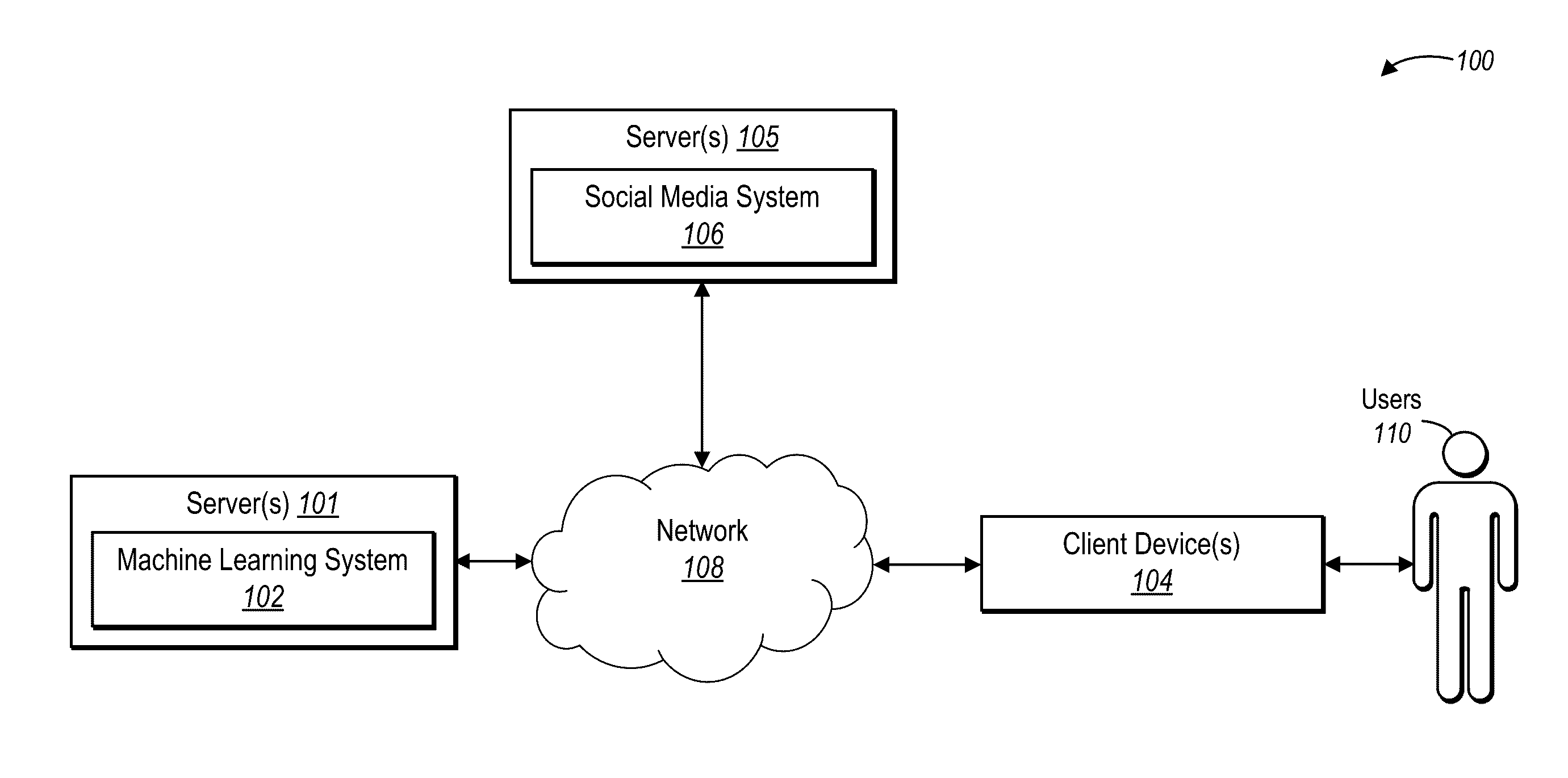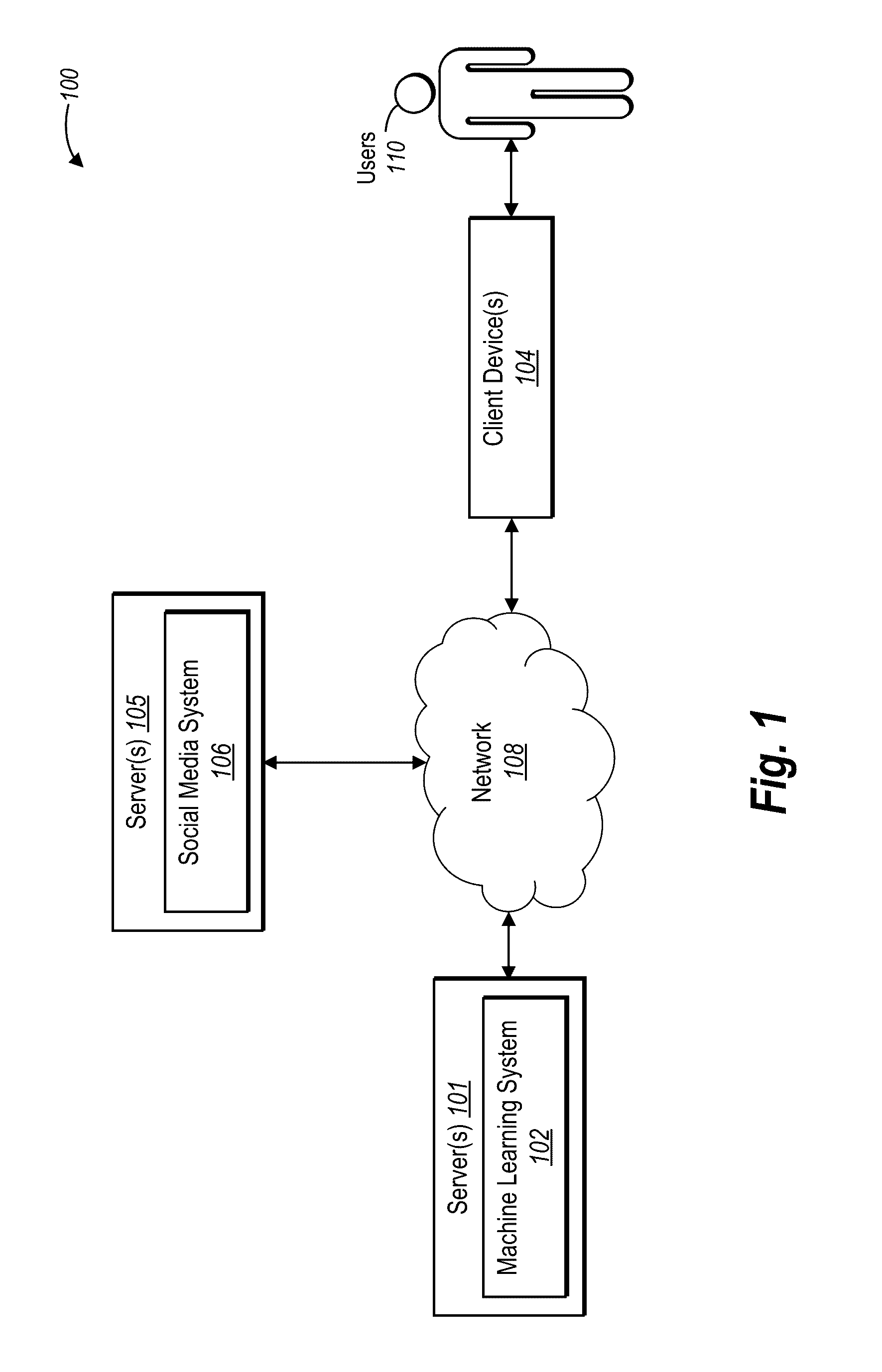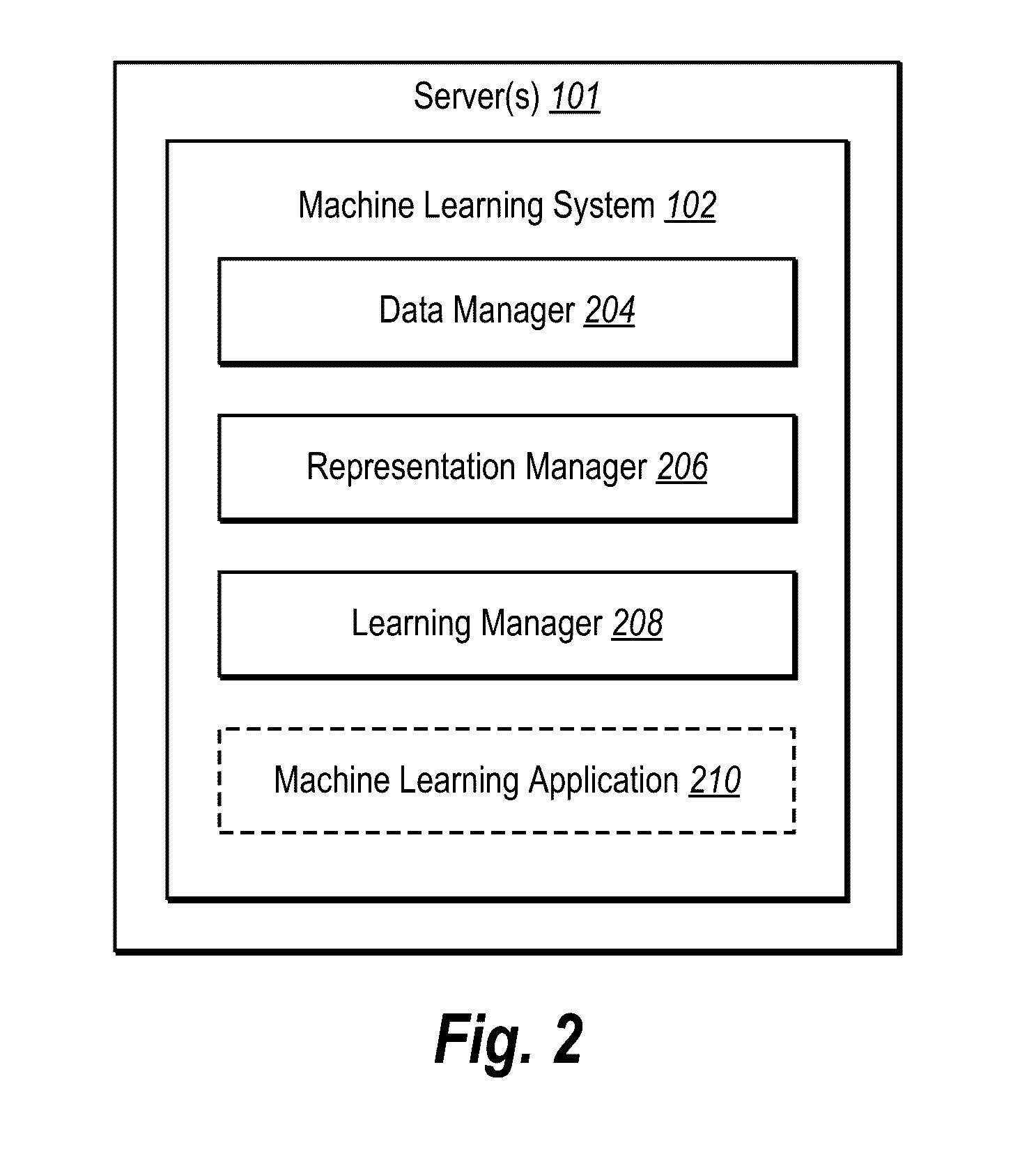Collaborative feature learning from social media
a collaborative feature and social media technology, applied in the field of machine learning, can solve the problems of image recognition, early system often requires a significant amount of domain knowledge, and early image recognition systems often do not generalize well to new domains
- Summary
- Abstract
- Description
- Claims
- Application Information
AI Technical Summary
Benefits of technology
Problems solved by technology
Method used
Image
Examples
experiment details
[0132]After the machine learning system populated a portion of the missing entries in the view training matrix Vtr with samples, the machine learning system applied regularized matrix factorization on the training matrix Vtr. More specifically, the machine learning system used the validation data to determine an optimal regularization weight (λ). Further, the machine learning system performed validation by using root-mean-square error (RMSE) for predicting the validation split of the training matrix Vtr with the inferred latent factors. Additionally, the machine learning system applied personalized ranking (PR) to measure the rank of positive and negative views for each user. Once the training matrix Vtr was populated, regularized, validated, and measured, the machine learning system used the training matrix Vtr to compute final latent factors using the optimal regularization weight (λ).
[0133]As an observation, through performing validation testing, setting λ to 0.01 and d to 100 re...
PUM
 Login to View More
Login to View More Abstract
Description
Claims
Application Information
 Login to View More
Login to View More - R&D
- Intellectual Property
- Life Sciences
- Materials
- Tech Scout
- Unparalleled Data Quality
- Higher Quality Content
- 60% Fewer Hallucinations
Browse by: Latest US Patents, China's latest patents, Technical Efficacy Thesaurus, Application Domain, Technology Topic, Popular Technical Reports.
© 2025 PatSnap. All rights reserved.Legal|Privacy policy|Modern Slavery Act Transparency Statement|Sitemap|About US| Contact US: help@patsnap.com



